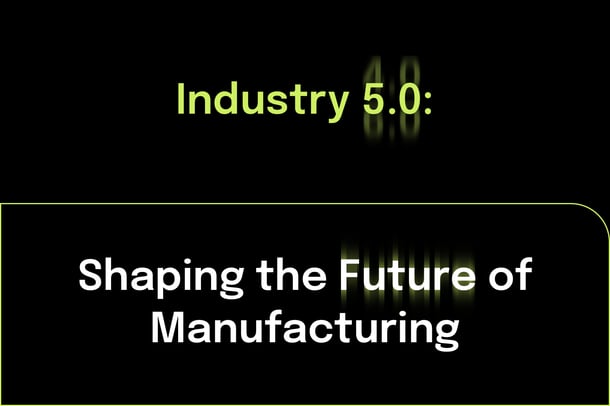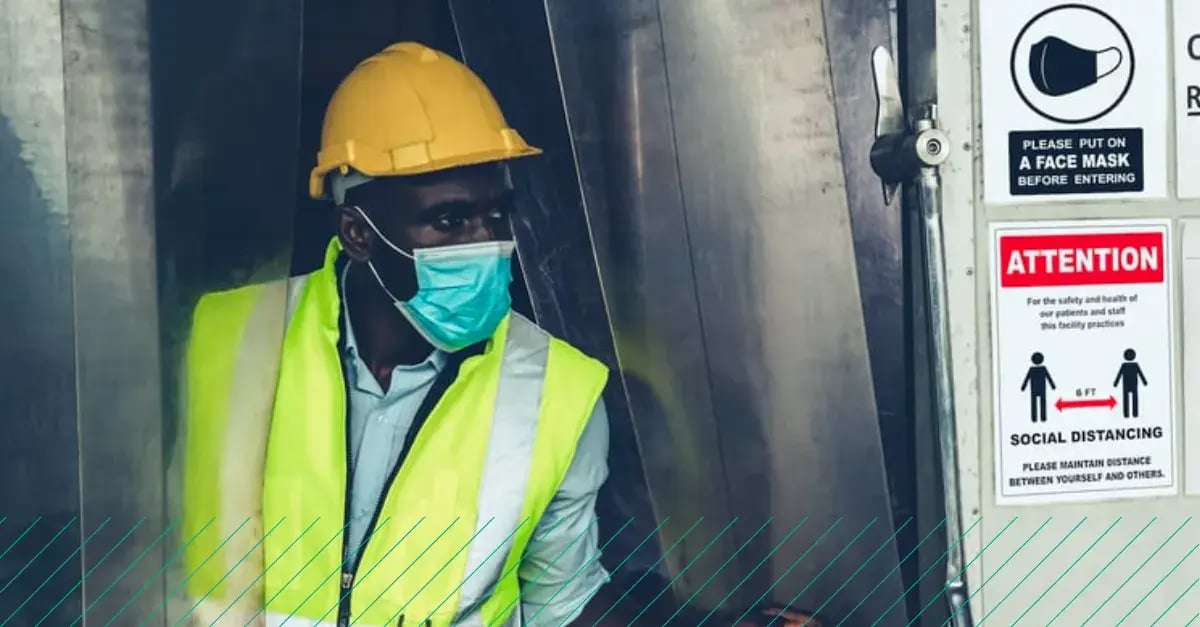

Industry Leaders' Post-Pandemic Learnings on Manufacturing Resilience.
What did leading manufacturers learn from the COVID-19 pandemic? Read about their practical learnings and key takeaways on manufacturing resilience.
Ensuring business continuity.
29% of manufacturing companies accelerated digitization projects to better adapt to the new normal once the crisis is over (McKinsey, 2020).
What tools and strategies have the leading manufacturing companies used to ensure manufacturing resilience during and after COVID-19?
1. Workforce planning & training.
The process of managing and mitigating risks around production continuity is often focused on the workforce.
Making crucial operational knowledge available across teams, lines, and sites has become increasingly important during times of crisis.
Companies see an impact on the following key areas when they share standard operating procedures and work instructions - digitally - with SwipeGuide:
- Standardized procedures maintain task and product quality across lines and sites.
- Digitized standard work helps deliver knowledge in the moment of need in a portable and scalable way.
- Train, onboard, and refresh shop floor skills by giving operators immediate access to the knowledge they need to excel at their job.
- Prevent mistakes and keep your lines running at all times - especially when you’re short on resources.
- Faster response time and troubleshooting errors faster with better accuracy.
“Invest in flexibility and agility in the workforce and
always expect the unexpected.”
2. Logistics and the supply of resources.
In order to adapt production to demand, it's vital that manufacturing companies (especially food and beverage) track changes in customer habits to ensure resilience.
These factors should be considered at the very least:
- Effects on what customer channels are used (eg. more focus on e-commerce).
- Which products are consumed (eg. alcoholic or non-alcoholic beverages);
- The location of consumption (eg. in bars or at home).
- Packaging of the products (eg. cans or bottles).
- Size of the product (eg. bigger sizes to avoid going to the store more often than necessary).
Agile end-to-end supply chain was another topic discussed in the roundtable. "Nearshoring" from national or regional suppliers instead of offshoring from the cheapest international supplier is a practice that keeps production running efficiently - even if supply chain routes slow down or even shut down completely.
It's essential that the sourcing of raw and packaging materials is based on new customer and consumer behaviour - buying habits have changed drastically during the pandemic. Current vendors should be reassessed based on price, quality, and location. Manufacturers can also establish global vendor programs in order to collaborate with other suppliers to ensure that products can always be delivered to the customer on time.
Inventory management is crucial to an agile and resilient supply chain, and higher inventory count should be kept just in case. Asset management and maintenance adjustments have also affected the way that field engineers work. They've found innovative ways for remote support to manage complex troubleshooting issues when they cannot be on location to solve problems.
“In hospitals, nurses have become more important than doctors. In manufacturing, we’ve seen that the shop floor workforce is more important than the managers.”
Protecting the workforce.
Without a capable and healthy workforce, even highly automated manufacturing would be in deep trouble.
- How can manufacturers ensure the health and safety of shop floor employees?
- What's the best way to make sure people feel safe - mentally and physically - during a crisis?
- What are some strategies to to keep the workforce alert when the crisis becomes less severe?
1. Employee empowerment.
Why waste time doing something that’s already been done well?
Sharing best practices and experiences across sites standardizes processes and saves a lot of time throughout daily operations. Empowering shop floor workers and field service engineers to take an active part in continuously improving processes and procedures increases their motivation and involvement, while simultaneously improving your knowledge base.
Another way to empower employees is through community and team building efforts. Initiatives that help employees and teams connect and support each other in meaningful ways improves overall engagement and fosters feelings of belonging in the workplace. In fact, a study by Betterup shows that if workers feel like they belong, companies reap substantial bottom-line benefits:
- 56% better job performance
- 50% lower turnover risk
- 75% reduction in sick days.
Obviously, this is always important - but especially so during a global pandemic that creates heightened feelings of anxiety and isolation.
Recognition and rewards are additional tools that many companies use to boost motivation in the workforce. Managers can, for example, reward employees who still come to work and comply with the regulations.
Many companies have also enacted temporary unemployment of the (middle) management to save costs. This drastic cost-reduction strategy has sent a message to operational teams that their work is vital and valued.
2. Health monitoring.
Procedures used to monitor the health of employees are fairly similar across resilient manufacturing companies.
For example, mandatory daily temperature checks before employees even exit their vehicles is an effective standard practice that provides immediate and actionable results.
Some companies go further and offer employees medical support on location. For example PepsiCo provides frontline employees with enhanced benefits and additional compensation during the pandemic. They have doctors who monitor and follow-up the physical and mental health on location in each plant.
Other companies like Heineken have standardized step-by-step health and hygiene instructions for their global workforce documented and distributed with SwipeGuide.
“We have the responsibility to make our workforce
feel safe and cared for.”
3. Social distancing adherence.
Working as a vital frontline employee during a global pandemic demands changes in behaviour.
Most companies mention redesigned lines and operations, including shielding units, PPE, and controlled social distancing rules at all times. Monitoring congested areas and setting up clear walking lanes within the factories is another standard featured across companies.
All companies who took part in our roundtable also mentioned daily compliance checks, like checks to ensure that masks are worn correctly and hands are washed. Implementing cross-factory support on how to enforce social distancing is another popular method within the participating manufacturers.
“We need to stress the urgency of keeping distance from
colleagues even when restrictions are eased.”
4. Working environment.
The physical working environment has been heavily affected by COVID-19 measures.
According to estimates, around 40% of all jobs can be plausibly done from home. However, since the majority of manufacturing jobs can't be performed from any other location than the physical work environment, adjustments are necessary.
Most manufacturing companies who took part in our resilience roundtable mentioned restrictions like "If you can work remote, you’re not allowed into the manufacturing facility or office".
Manufacturers can also make direct physical improvements to their working environment in the form of high-tech climate and filtration systems. Other topics discussed in our roundtable included improved temperate and humidity maintenance through new ventilation and air quality systems.
“Investing in state of the art ventilation systems for our factories has
had a positive impact on air quality.”
5. Internal communication across factories and offices.
Internal communication is crucial for employees to stay up-to-date and feel connected. Obviously, all companies organize their internal communication patterns in different ways, but here's a setup suggested by some of the leading manufacturing companies who joined the discussion:
- Daily: Stay up to date via workforce communication tools. For example, Beekeeper is an excellent communication tool for deskless teams to share news and updates.
- Weekly: Messages sent from the top management regarding regulations and culture, adapted to each country and region.
- Biweekly: Initiate internal webinars to share company updates and recommendations, and to promote connections among colleagues.
“Culture is a strong element in smooth communication - and in operations.”
PS. These findings were collected during a virtual invite-only SwipeGuide roundtable for manufacturing leaders in October 2020. Attendees work for organizations including PepsiCo, Heineken, and Golden State Foods.
Author
Revisions
It's time to simplify frontline training
Work instructions, checklists, and skills management - all in SwipeGuide
- Cut training time by 50%
- SOC I and II compliant
Get to know us
SCHEDULE YOUR DEMOResources
-
1
How to empower your frontline with better instructional design. -
2
How to gain the edge in Industry 4.0 with smart manufacturing practices. -
3
How to make excellent digital work instructions. -
4
How to deliver continuous improvement at the frontline with Lean principles. -
5
How to capture, share, and improve expert knowledge with digital SOPs.



